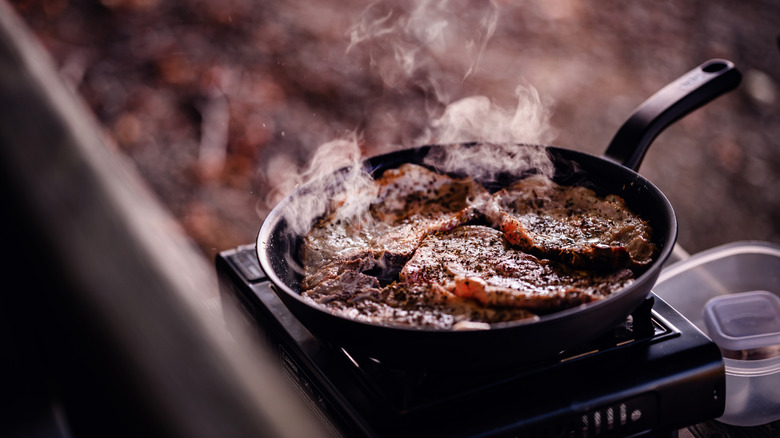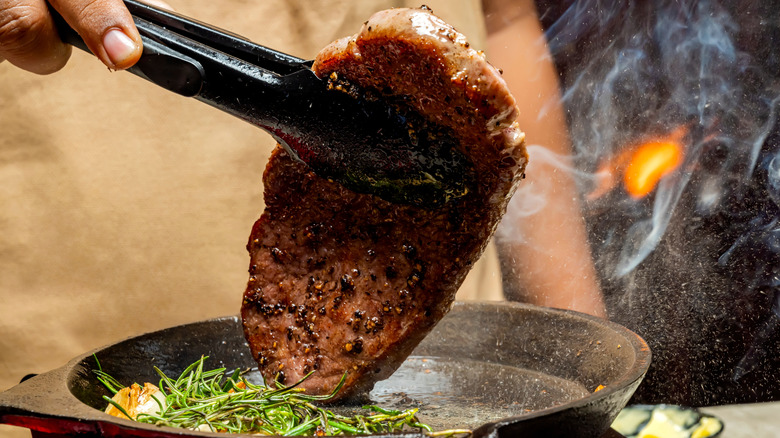Why Your Steak Went Bowl-Shaped And How To Avoid It
Even if you've purchased a high-quality cut, seasoned it perfectly, and prevented all the standard mistakes to avoid when cooking steak, it may have ended up curling into a bowl shape in the pan. While this is one of the worst-case scenarios for a great steak, Marissa Stevens, recipe developer and founder of Pinch and Swirl, explained the process to us and how to avoid it.
"It's mostly due to uneven muscle fibers tightening during high heat — especially near the edges — and from the fat cap shrinking faster than the meat underneath," says Stevens. Since a preheated pan or hot grill delivers heat right away to the exterior of your steak, it comes to temperature much faster than the interior. While unlearning the steak flipping myth of only turning it once helps, it's better to take care of the issue before your meat ever touches a cooking surface.
"Trimming excess surface fat, scoring the edges lightly, or even making small cuts into the silverskin can help prevent the 'potato chip' effect," Stevens tells us. By trimming these areas, you essentially prevent them from forming a tightening band around the meat that pulls it into a bowl shape. The simple trick also prevents pork chops from curling, along with other meats with fat caps and silverskin, but this is an especially important trick to know when working with expensive steaks. Many of the tricks to prevent curling have other benefits, creating the most mouthwatering entree you could want.
How to cook a steak so it won't curl
Breaking up the fat and silverskin that leads to steak curling is great, but it's not the only trick to help your meat keep its shape. Marissa Stevens has some tried and true methods to not only prevent it from becoming bowl-shaped, but also to maximize its flavor through proper preparation.
"Start with a preheated pan and dry steak," Stevens says. "Lightly score the fat edge, press the steak down for the first 30 seconds, and don't move it too soon." That first 30-second press forces the surface of your beef to adhere to the pan. While this alone won't be enough to prevent curling, when used in conjunction with a scored fat edge, the two tricks synergize and go a long way. Plus, moving your steak too early is always a mistake you should avoid while cooking steak if you want a perfect Maillard crust.
"If it's a thick cut with a tendency to curl (like a NY strip), you can also weigh it down with another pan for the first minute or two to help it stay flat," Stevens finishes. Typically, the weight of a pan is enough to ensure the steak lies flat against the pan. Any more and you risk pressing out juices while it cooks. If you cook steaks regularly, you might want to invest in a cast iron steak weight, as they're durable and heavy enough to do the job time and time again with minimal maintenance requirements.


